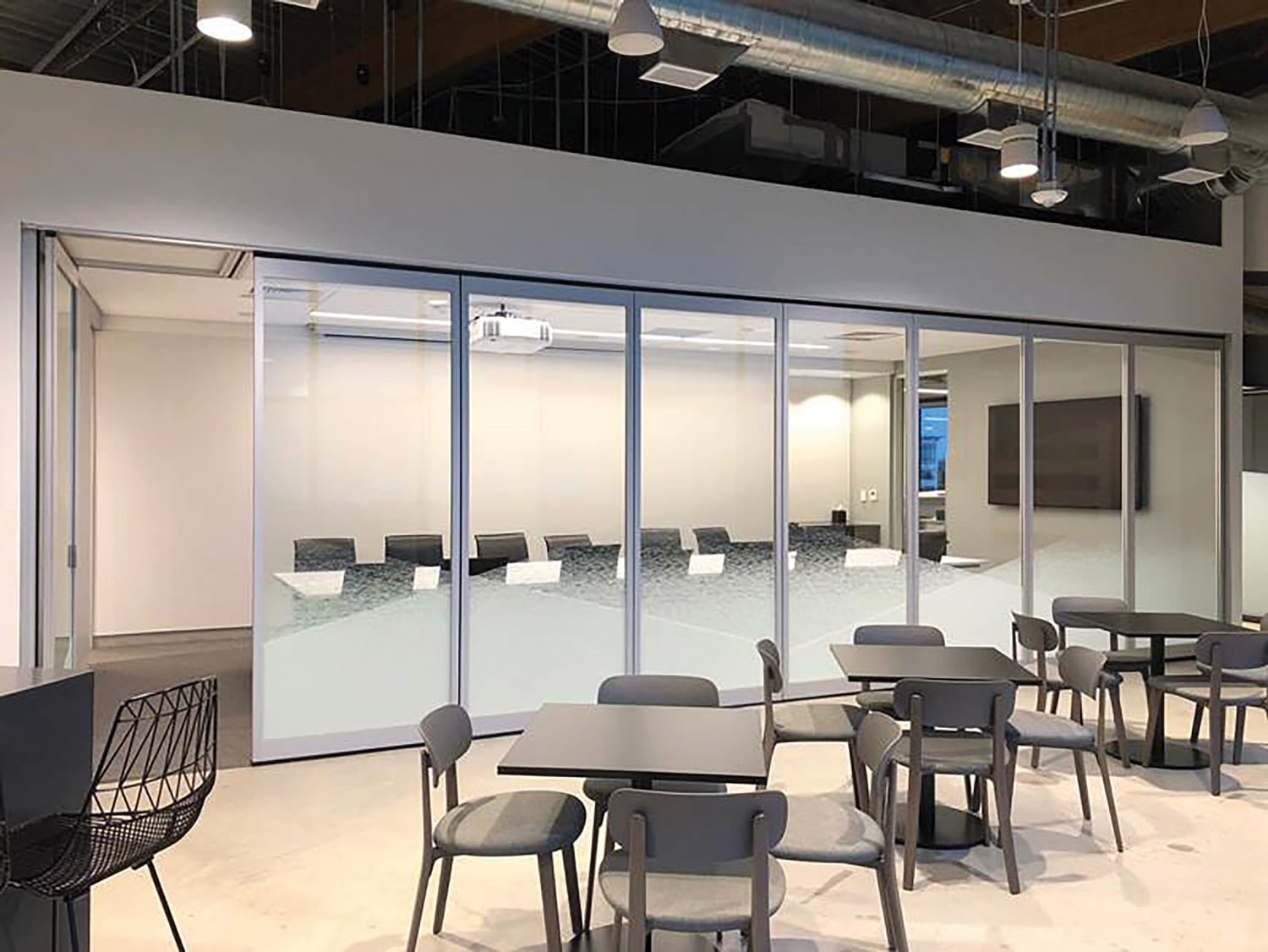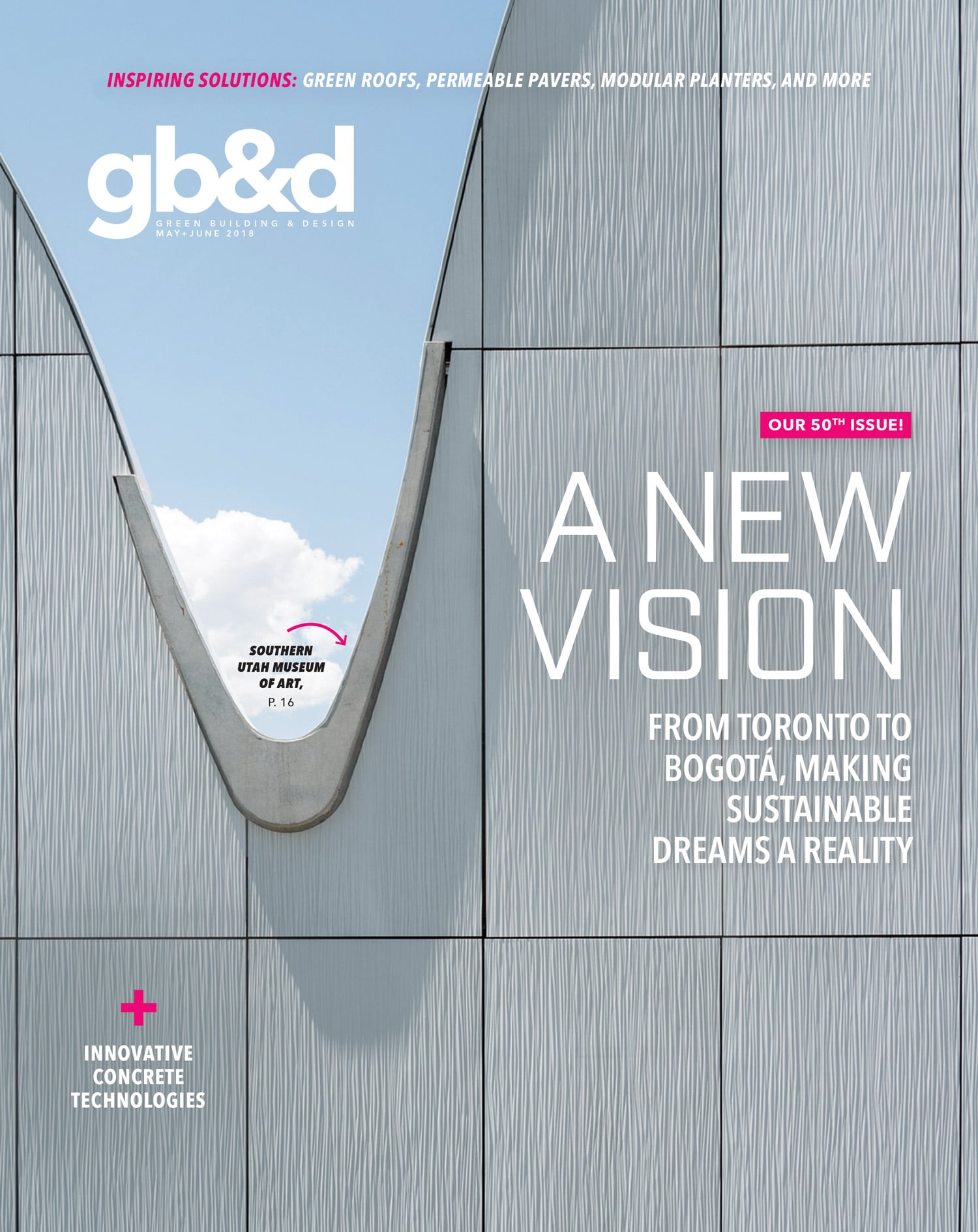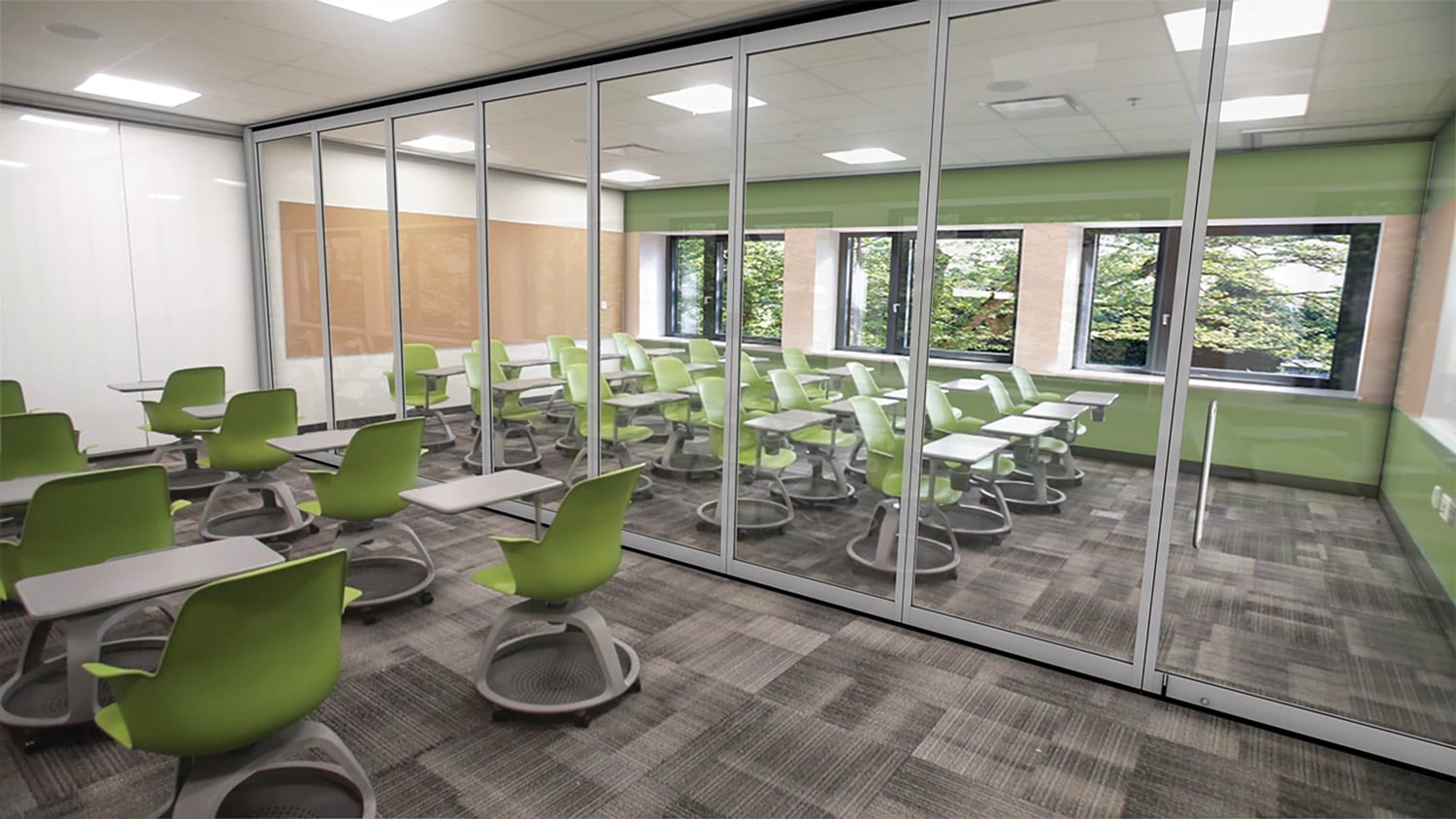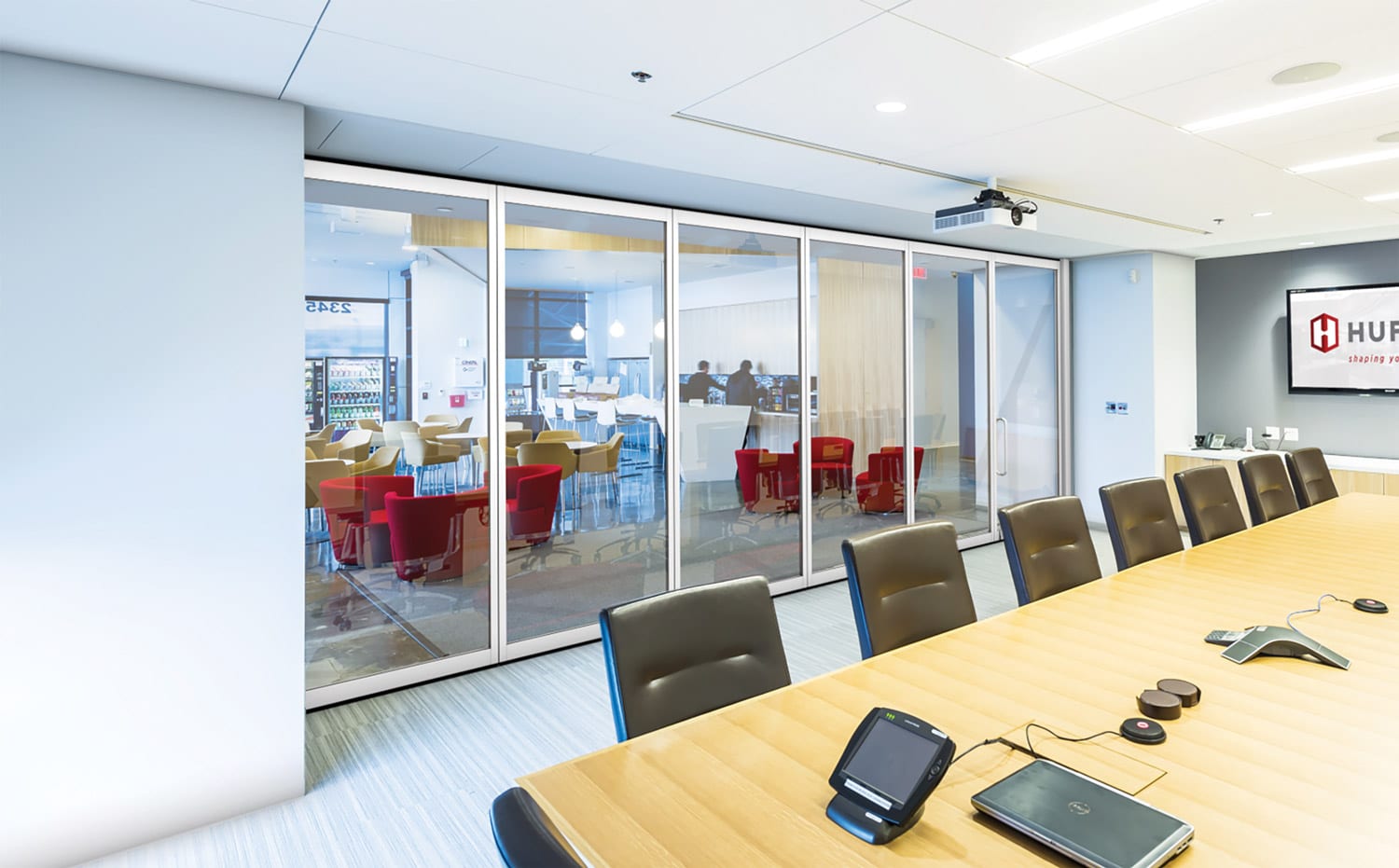Hufcor’s new InVista glass panels combine sleek, minimalist design with superior acoustics.

Hufcor’s InVista Low Profile Acoustical Glass Wall combines aesthetics with high-quality sound blocking. [Photo: Courtesy of Stantec]
Open floor plans are the perfect way to bring natural light into an office space. They’re also a great way to encourage employees to collaborate. However, open designs can also be challenging when workers need a private space to hold a meeting or a group discussion without disrupting everyone else.
This was the challenge the design and consulting firm Stantec faced in early 2017, as the company prepared to move into new office space in Austin, Texas. Amy Martinez, a senior interior designer at Stantec who helped design the new office, says the company wanted to preserve the open space and high ceilings but also needed to create a conference room area that opened into the break room. This would allow the space to accommodate larger crowds, providing more flexibility when not in use, so they researched solutions to help balance openness with functionality.
Wisconsin-based Hufcor Inc. knows a thing or two about making space adaptable. The 118-year-old company is the world leader in moveable walls. For years, Hufcor made its name manufacturing and installing the giant modular panels often found in large hotel conference centers. But the company has since developed many kinds of moveable partitions, designed to accommodate everything from elementary schools to office spaces to SWAT team training facilities.
When designers at Stantec were doing shop drawings of the new office space, it turned out that Hufcor had a brand new panel system in the works—the InVista Low Profile Acoustical Glass Wall—that would combine ease of use and a minimalist aesthetic with top-notch sound blocking capabilities.
Striking a Balance
Hufcor is an innovative company. In addition to designing, installing, and servicing its own products, the company also services competitors’ products. “It gives us great insight,” says Rick Woods, a marketing product manager.
Through this unique form of market research, Hufcor realized a common problem with existing modular glass panels. They were either sleekly designed but let too much noise through or blocked sound well but had big, bulky frames.
Hufcor challenged its engineers to build a product that prioritized both acoustics and aesthetics. With InVista, Hufcor wanted to remove as much of the frame as possible while retaining structural integrity and acoustic performance. The key, according to Mike Kontranowski, Hufcor’s vice president of marketing, was not the glass itself but the hardware surrounding the glass.
Engineers developed a new pin-and-lock system to secure the panels and included seals at the top and edges of each panel to make sure noise levels were adequately controlled. At the same time, engineers made InVista’s frame much slimmer than those of comparable products, without sacrificing sturdiness or acoustic performance. “It’s slimmer and has a very clean look to it,” Kontranowski says.
FROM OUR MAY+JUNE 2018 ISSUE

The preferred publication of leading green professionals.

Hufcor’s InVista product has also been effective in school settings. [Photo: Courtesy of Hufcor]
Coming to Life
Putting the InVista panels in Stantec’s offices came with an unexpected challenge. The space had 15-foot ceilings and lots of windows providing natural light and views of downtown Austin. But the oddly shaped, high-ceiling space lacked the structural steel or concrete typically used to mount the support tracks.
But challenges are nothing new to Hufcor. Most installations require changes to make them work—that’s why more than 90% of the company’s installations are custom-designed. “We’re more of a design-build firm than a product manufacturer,” Kontranowski says.
To address the lack of structural support at Stantec, Hufcor installers bolted up a freestanding structural support system inside the space. Interestingly enough, this isn’t the first time Hufcor has faced this challenge. Years ago, Hufcor created yet another product for this very situation—called Unispan. This created a track for the panels but avoided the need to install steam beams and diminish the space’s open feel.
Stantec moved into its new space near the end of 2017, and Martinez says employees love it. “We were able to open that whole wall up and create one large, open space. It creates a great environment for employees to take their laptops and go in the break room and work,” she says.
The open space has also encouraged conversation between younger staff and more tenured staff, who are now learning from one another and trading ideas. And, if someone in the office needs to hold a closed-door meeting, all they have to do is slide the panels together, lock them, and listen as the chatter fades discreetly into the background. “It’s been really cool to see our space come to life,” Martinez says. “It was exactly what we needed.”

[Photo: Courtesy of Hufcor]
Before & After
Improved acoustic performance wasn’t the only breakthrough Hufcor engineers made in designing InVista. While previous products left hardware exposed even after all the panels were locked in place, the company designed a new pin-and-lock system to hold the panels together. Once locked down, only the hardware on the outermost panel can be seen.
There are other streamlining touches, too. Hufcor removed the need for a floor track—InVista walls are set in a single ceiling track that is flush-mounted with an office’s drop ceiling. And engineers relocated the panels’ edge pin, previously located near the floor, to waist height for easy unlocking and repositioning.


